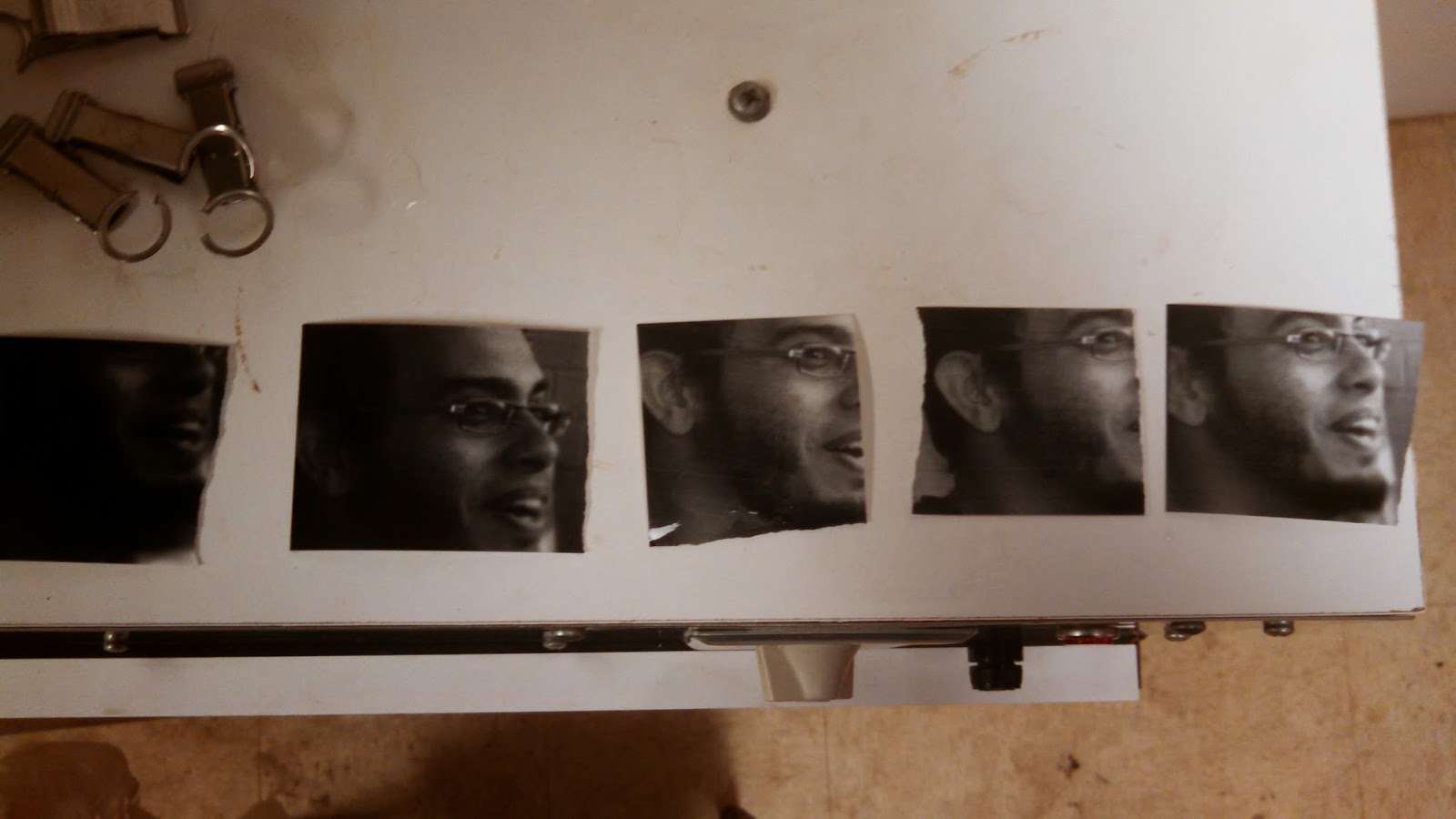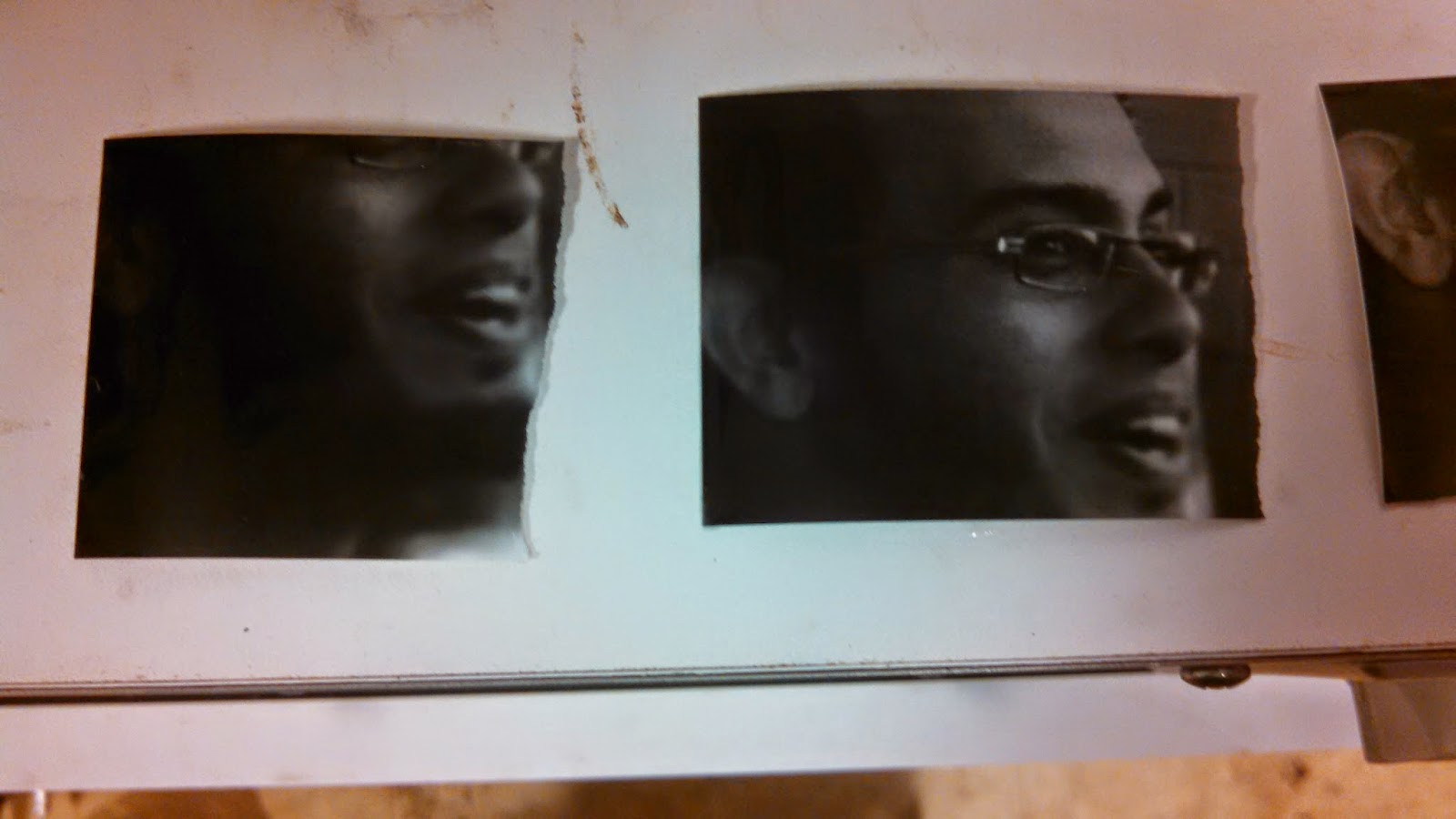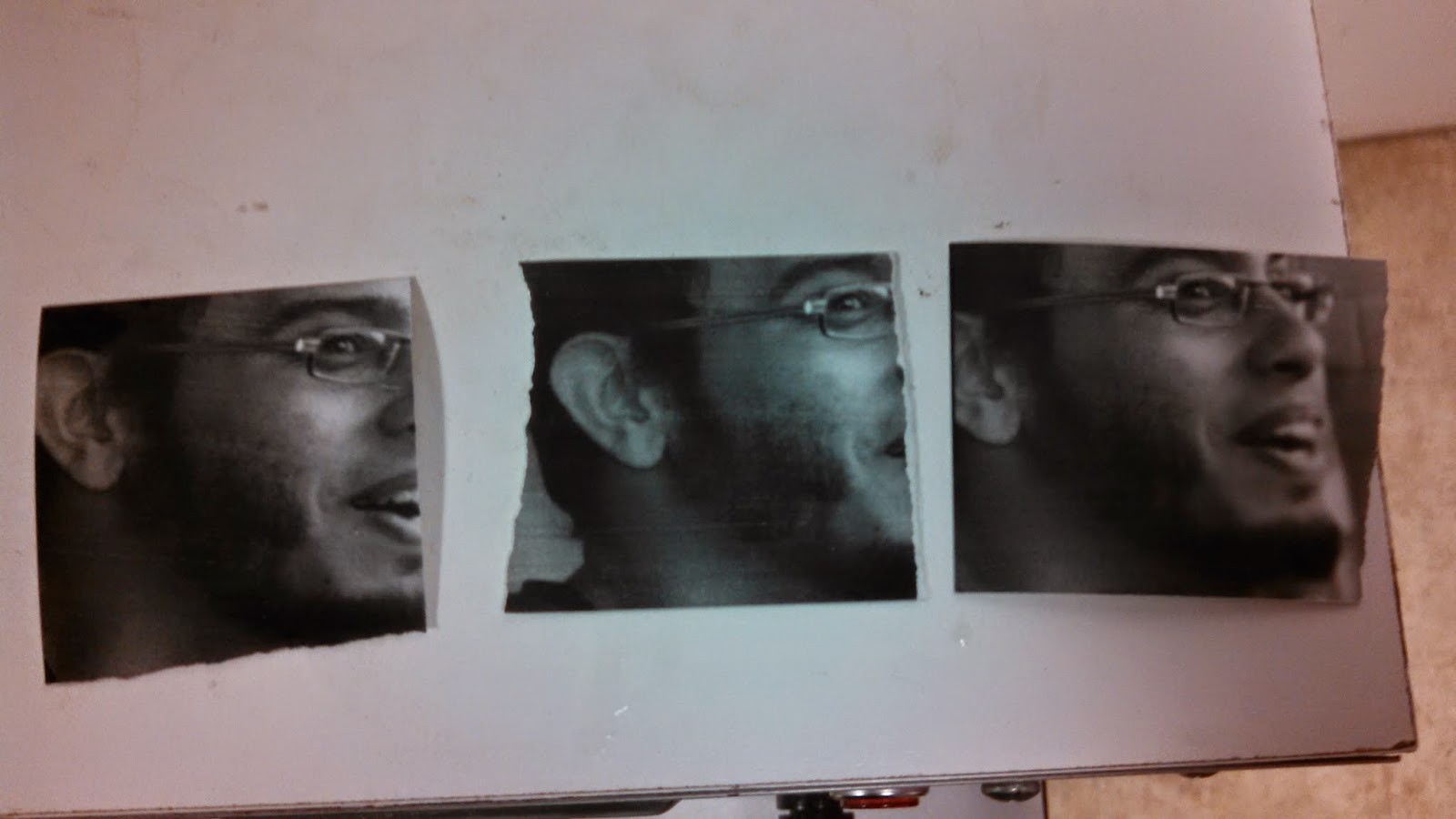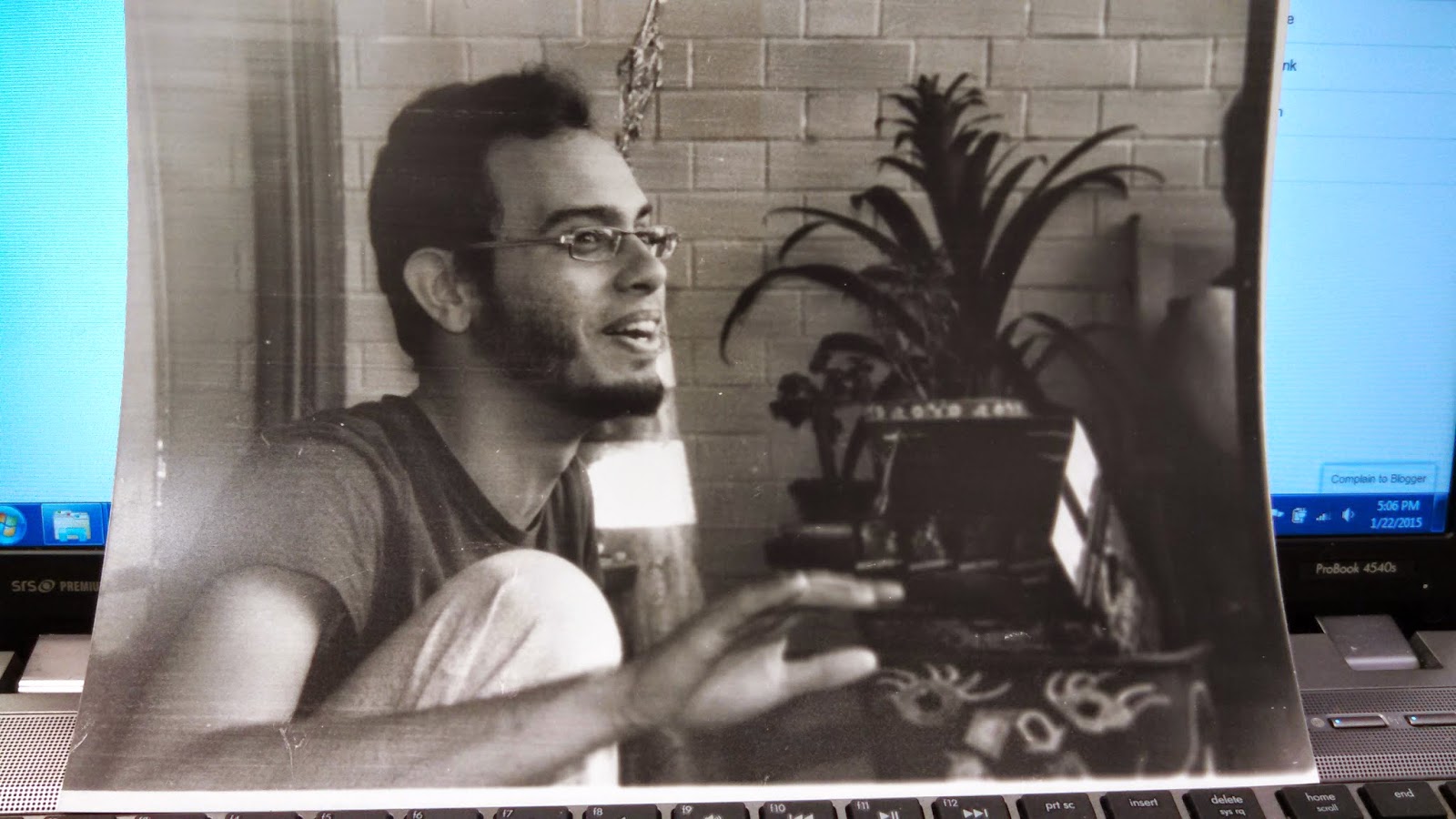The second portion of the night was't nearly as nice and easy sailing. The very first attempt using the 11 trick I realized that I had accidentally and very carelessly forgotten to chance the f-stop from 2 to 11 so the image was way too exposed and I basically got a completely back sheet of photo paper. Not the most exciting way to start not to mention the small amount of guilt that you could have saved a piece of paper. Instead of of wasting too many more sheets I decided to start using test strips to start honing in on a crisp photo.
 |
| 5 test strips of a photo |
 |
| The first two were taken with f/2 and the times of 0.5 and 0.3 seconds, respectively. |
 |
| I realized that I didn't want to have my f-stop letting so much light onto my negative so I changed back to f/11 with 10, 10.5, and 11 seconds respectively. |
I finally decided on the 10.5 second option since it gave a clear image with nice shadows. The very first time that I tried to make the 8x10 print I was horrified when the entire sheet came out completely black. I rushed back to check the settings and everything was in order. I tried again after triple checking everything and once again all black. Mind you developing photos is NOT a quick and easy process. You have to make sure everything is in focus and then you have to follow through the processes of all the chemical baths so that you can look at it out in the light. And just like that 10 minutes have gone by! Finally, for no rhyme or reason, the third piece of paper turned out beautifully.
 |
| Nick Padilla |
When the image appeared I knew that it was the one. Despite the slight about on streaking on the left hand side of the photo, the slight smile on Nick's lips, the balcony just clear enough to capture the moment, and the tacky Christmas star sticking out of the traffic cone all are so organic and brings a smile to everyone's lips.
After my final success I hurried on to the next picture, one of Zoe getting licked by a dog down by the bay. I got everything adjusted with all my triple checks and with a deep breath pretty the button. I rushed the sheet over to the developing tub and hopefully slid it in making sure that the solution touched the paper evenly. The result.... a black sheet of paper.... again.
After lots of frustration and usage of more test strips that were successful I have come to several conclusions.
1. I can confidently mix developer now.
2. There must have been a certain amount of paper that had been exposed to light. I had two different packs of paper that appeared to have been hidden from the light but there must have been some sheets that got randomly exposed to the light because nothing else explains why I was getting such inconsistent results.
3. Patience is a virtue when it comes to developing pictures. When I first started working on the contact sheets everything seemed so easy because I was developing on a 1:1 ration which meant that I wasn't dealing with the factor of enlarging. Being paid for this totally makes sense now. While a bathroom darkroom is fun for a couple of pictures, doing this in large quantities is a pain in the butt!
My next step is to return to the darkroom and start playing what I have nicknamed Russian roulette: the photo paper edition. I absolutely have to be able to have more consistent results if I am going to be dealing with altering more factors of the developing process.













































